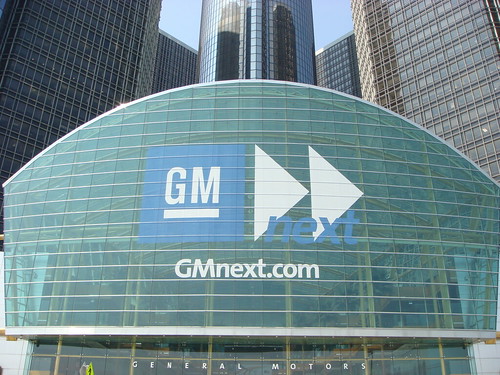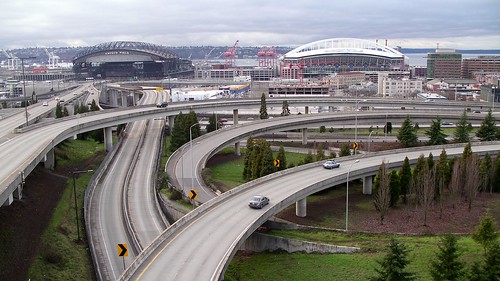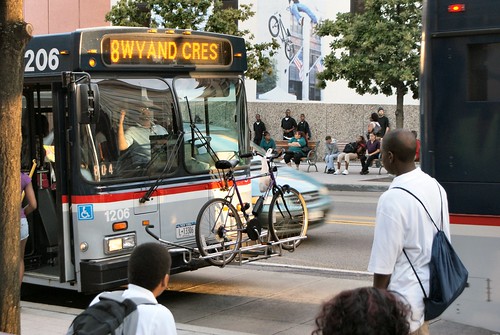Scoopful of GM News – April 29, 2009: Idling in US & thriving in Mexico; Danger to nation; Le Miserable; Dealer deals; Ethanol love; Camaro Crap-out; 150mpg?; Volt; Saturn stories; Pontiac killer?; Looming pay cuts
REPORT: Largest American Axle plant to idle as work shifts to Mexico…choking GM‘s demand for American Axle components (accounting for 74% of the floundering supplier’s sales). Founded in 1994, American Axle will start moving the facility’s production to Guanajuato, Mexico over the summer. More than 500 of the 700 workers at the Detroit complex will be laid off indefinitely, and only 232 of the company’s most seni…
DetNews columnist warns of the dangers of nationalizing GM…GM, UAW/UnionsDetroit News columnist Daniel Howes has penned a commentary on what he believes the “mind-numbing” future could be if the White House and the United Auto Workers end up with majority control of General Motors.Howes fears that a government-and-UAW-controlled boardroom would end up an echo chamber, with both parties worried mainly ab…
Michigan Screws Up Laid-Off GM Factory Worker Unemployment, Forces Payback [Carpocalypse]…Unemployed former GM factory worker Greg Eddy has his share of problems, but thanks to Michigan’s inability to calculate unemployment benefits, he’s now also getting less money and a whopping $2,400 bill. After Eddy lost his job with GM — twice — he decided to go on unemployment while heading back to school at ITT for a degree in communications….
REPORT: GM won’t pay dealers for franchises, will buy back parts, vehicles…GMIn a special broadcast to dealers yesterday, General Motors’ sales chief, Mark LaNeve, explained that the automaker would buy back unsold new vehicles and parts from dealerships slated to be phased out by the end of 2010, but GM wouldn’t pay off dealers for their franchises.As reported earlier this week, GM plans to cut it U.S. dealerships by …
GM makes the case for testing E15 ethanol blend…GM has long been a proponent of using high-level ethanol blend, E85, in motor vehicles. But, with all of the talk of putting E15 or E20 (gasoline with 15 or 20 percent ethanol blended in) into the national supply – see these earlier posts about the EPA, the Minnesota Ag Department, the Secretary of Agriculture, and the Underwriters Laboratories…
First Camaro Crap-Out Comes 40 Miles From Dealership [Chevy Camaro]Maybe worse than the first Camaro wreck is the first Chevy Camaro breakdown. This “p**sy magnet” Bumblebee-yellow Camaro lost all electrical power and coasted to a stop with a scant 40 miles on the odometer. The ecstatic new owner, a forum fan-girl by the name of BUMLB, was crushed when the car conked-out cruising through a parking lot at a leisure…
AFS Trinity brings “150 mpg” plug-in hybrids to Capitol Hill for some sweet stimulus cash…an old GM plant and build “hundreds of thousands of plug-in hybrids” that could be sold for just $8,000 more than the non-hybrid versions. Gallery: AFS Trinity Cross Country Trip with XH-150[Source: NYT]Filed under: Emerging Technologies, EV/Plug-in, Hybrid, Legislation and PolicyAFS Trinity brings “150 mpg” plug-in hybrids to Capitol Hill for s…
Chevy Volt: First Drive? [Vaporware]We’d love to drive the Chevy Volt test mule like Wired and others, but we’re pretty sure the Volt PR team is afraid of us. As well they should be. We actually have readers. [Wired]
Saturn’s death could hurt GM CAFE numbers…part of GM. One of the primary reasons that Saturn is being disposed of is poor sales. There is, however, one exception to that sales record: hybrids. So far, Saturn has accounted for about a quarter of GM‘s sales of hybrids. Saturn also had the best CAFE numbers of any GM division, thanks to the absence of any full-size body-on-frame vehicles o…
Killing Saturn Kills 25% Of GM Hybrids [Carpocalypse]…of GM hybrids. Damned if they do… [AutoNews via AutomobileMag]



